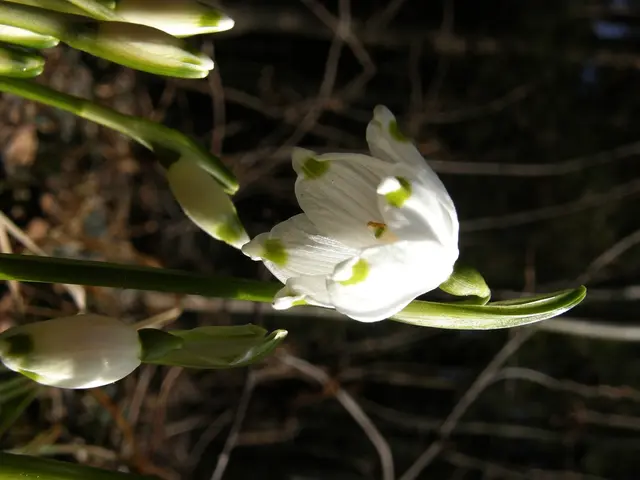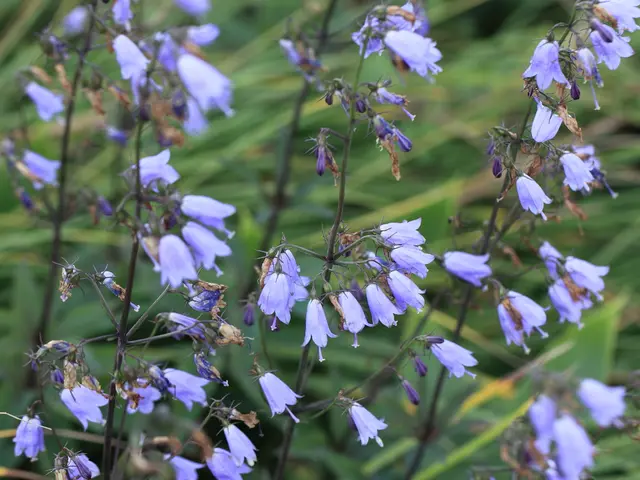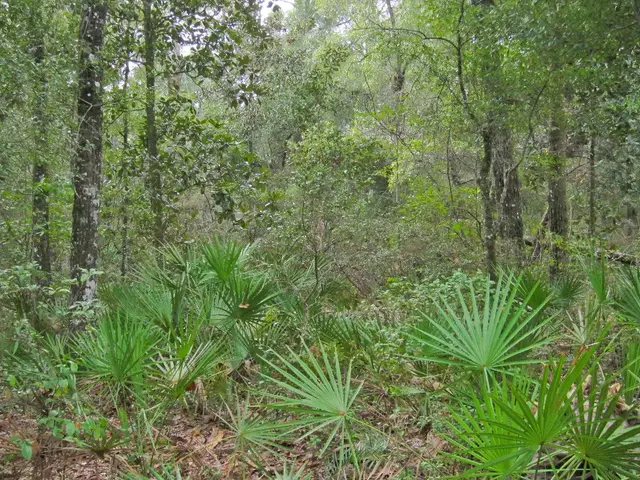Blueberry Fertilization Timeline in Georgia: Crucial Information on Seasonal Fertilization Practices
In Georgia, the growing season for blueberries is a delight for both experienced and novice gardeners. Here's a guide to help you cultivate these delicious fruits in your garden, based on the recommendations of our local expert, Glen, with over 15 years of gardening experience.
Soil Preparation
Blueberries thrive in acidic soil, with an ideal pH range of 4.5 to 5.5. To maintain this acidity, incorporate elemental sulfur, peat moss, or organic materials like composted pine bark and sawdust into the soil. Avoid liming unless the soil becomes overly acidic, which is rare.
For optimal drainage, amend heavy clay soils with sand and organic matter. Mulching with pine needles or bark helps retain acidity and moisture.
Planting
Blueberries should be planted in early spring, spaced 4-6 feet apart, and planted in holes twice as wide as the root ball and just as deep. After planting, mulch with a 2-4 inch layer of pine bark or pine straw.
Fertilizing
Apply the first dose of granular fertilizer in early spring, around March. A good choice is 10-10-10 or 12-4-8. In July, blueberries should be fertilized again to build up reserves for the rest of the growing season. To ensure healthy growth, it is recommended to fertilize them after leaf-out in spring and again after harvest, avoiding over-fertilization to maintain soil acidity and plant health.
For young plants under two years, a second application of fertilizer in early summer helps. I prefer slow-release fertilizers such as ammonium sulfate. Urea fertilizer is great for providing nitrogen but should be used carefully to avoid overfertilization.
Watering
Blueberries need regular watering during establishment and growth, but soils must remain moist—not saturated—to prevent root rot. During summer, water becomes critical due to shallow roots, and an irrigation system can help maintain consistent moisture levels.
Maintenance
In fall, apply another layer of mulch to insulate the roots from cold weather and prune any dead or diseased branches. After planting, regular monitoring is essential to protect blueberries from pests like spotted wing drosophila and diseases like root rot. Using organic sprays or neem oil can help manage minor infestations.
Varieties
For Georgia's climate, Rabbiteye blueberries are native and more drought-tolerant. Southern highbush varieties are ideal for southern Georgia due to their lower chilling hour requirements. Popular blueberry varieties in Georgia include Rabbiteye, highbush, and southern highbush.
Sustainable Practices
To achieve optimal blueberry yields in acidic soils typical of Georgia's growing regions, incorporate sustainable practices such as soil testing, organic matter addition, mulching, and careful monitoring. Supplemental feeding is beneficial, especially during periods of rapid growth. Look for signs like yellowing leaves to determine if your plants need an extra boost.
Glen, our local expert, creates helpful content for a blog, offering insights and tips on gardening, including a series of articles posted on June 9, 2025, about garden fungicides, the optimal harvest time for Candy Cane peppers and watermelons, and blueberry fertilizing strategies.
By following these guidelines, you'll be well on your way to a bountiful blueberry harvest in Georgia!
Incorporating acidic soil elements like peat moss, elemental sulfur, composted pine bark, and sawdust can enhance the growing conditions for blueberries in a home-and-garden setting, much like Glen's recommend to cultivate these fruits in a lifestyle that prioritizes home cultivation. When it's time to plant the blueberry bushes, they should be placed in home-and-garden spaces with a pleasant and inviting gardening environment, where they can thrive and produce ample harvests for home-use and enjoyment.




